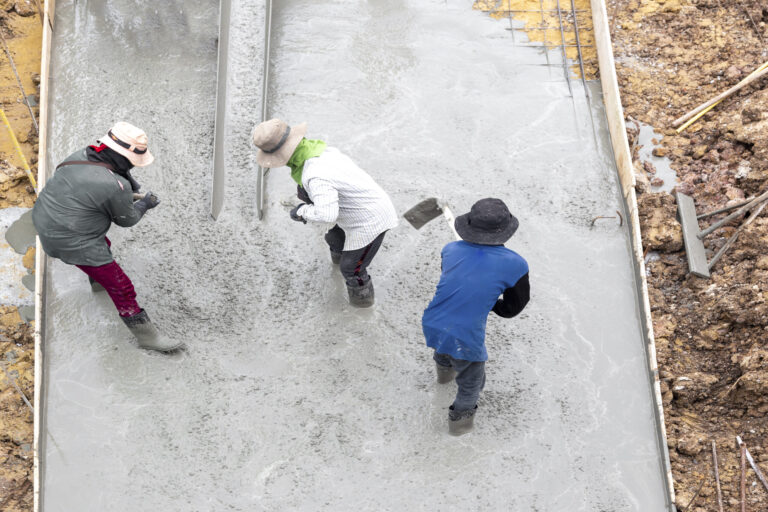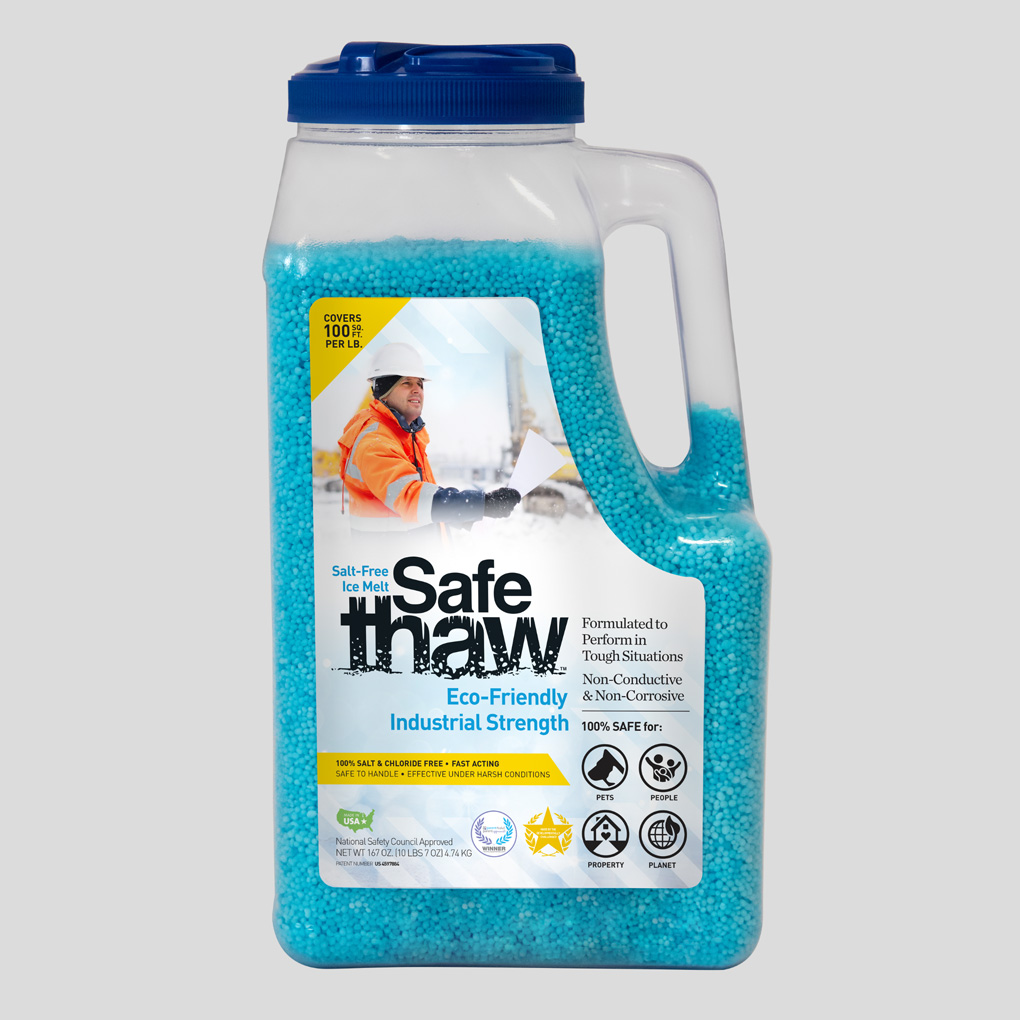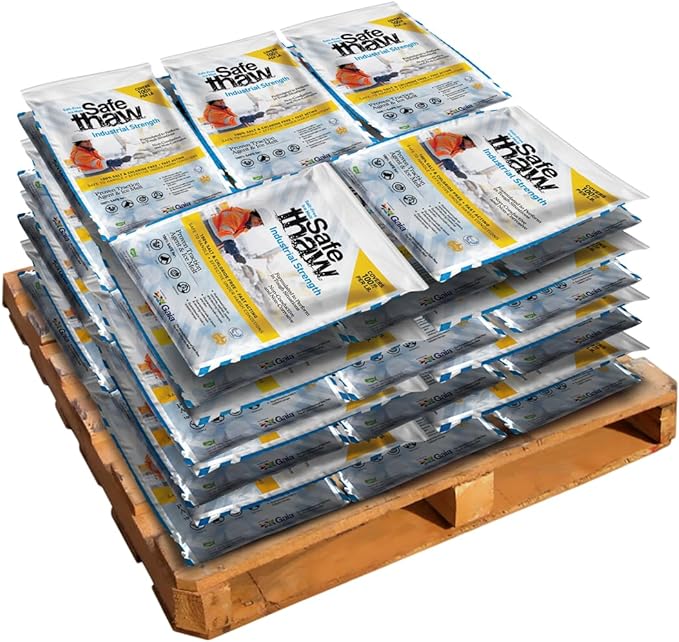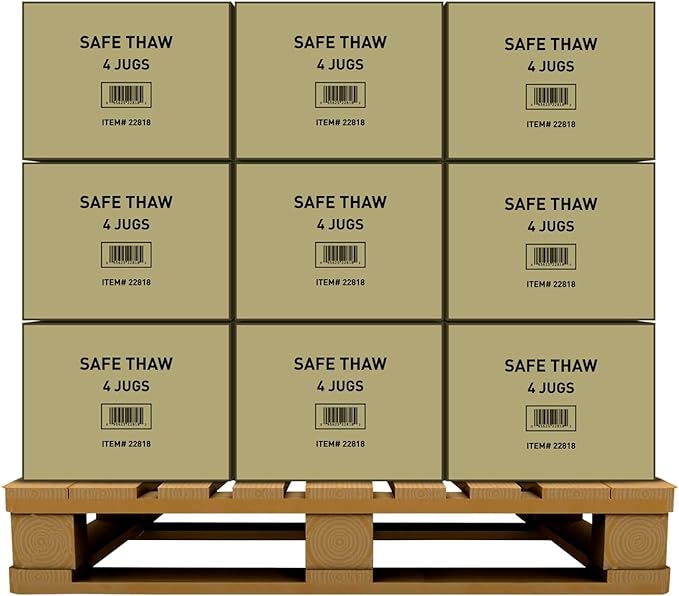Identifying The Best Temperatures To Pour Concrete

Pouring concrete is an art backed by science. From the mix ratio to the curing process, many variables can influence the final result. Among these, temperature plays an indisputably vital role. It can determine the quality, strength, and longevity of the poured concrete. So, what temperature can you pour concrete, and when is it just too cold?
Identifying the Best Temperatures to Pour Concrete
Pouring concrete may seem straightforward, but the temperature, humidity, and seasonal variations play a significant role in its strength and durability. Whether you’re working on a driveway, patio, or foundation, knowing the best conditions for pouring concrete ensures long-term success and prevents damage like cracking and scaling. In this guide, we’ll explore temperature considerations, the role of admixtures, and tips to maintain ideal curing conditions.
For homeowners preparing for winter, understanding the impact of temperature on concrete is essential, particularly when using ice melt on new concrete and ensuring products are safe for pets.

Safe Thaw
Safe Thaw was created as the ice management solution for tough winter environments. Ideal in commercial and industrial properties, shops, government agencies, bridges, and construction.
Understanding The Science Behind Concrete And Temperature
Concrete doesn’t simply “dry” – it cures. The curing process involves a chemical reaction known as hydration. When water is added to cement, this reaction is initiated. But temperature can greatly affect the speed and efficiency of hydration.
The Ideal Temperature Range
What temperature can you pour concrete? Most experts agree that the optimal temperature for pouring concrete lies between 50°F and 60°F. During this range, the rate of hydration is stable, ensuring that the concrete sets properly without being too fast or too slow.
When It Gets Too Cold
Below 40°F, the hydration process slows down significantly. So, what temperature is too cold to pour concrete? Most professionals will hesitate to pour concrete if the temperature is expected to drop below 50°F within a 24-hour period post-pouring.
If the temperature falls below freezing, the water in the mix can freeze, leading to potential cracking. Frozen concrete won’t cure properly, leading to a weak structure that can crumble under pressure.
Hot Weather Concreting
While the focus is often on the cold, pouring concrete in excessively hot temperatures can also be problematic. Above 90°F, water can evaporate from the mix too quickly, leading to a weaker structure. Rapid curing can also cause surface cracking and decreased overall strength.
Impact of Humidity on Concrete Curing
Humidity levels significantly influence the curing process, which directly affects the hydration of cement.
Understanding Hydration and Humidity
Concrete gains strength through a chemical reaction called hydration. During this process, cement reacts with water, forming crystals that harden the mix. In low humidity, water evaporates quickly, leading to incomplete hydration and weakened concrete. Conversely, high humidity slows evaporation, maintaining moisture levels for proper curing.
Effects of Extreme Humidity
- Low Humidity: Accelerates water loss, leading to surface cracks and reduced strength.
- High Humidity: Slows down the curing process but may also create surface issues like efflorescence (white salt deposits).
Maintaining Optimal Conditions
To achieve consistent curing:
- Keep the concrete surface moist by using wet burlap or curing compounds.
- Use plastic sheets to retain moisture in low-humidity conditions.
- Monitor the environment with a hygrometer to ensure ideal curing conditions.

40 Bags
Safe Paw Thaw Industrial Strength Salt-Free Pet Safe Snow Ice Melter and Traction Agent for Concrete, Asphalt, Decks, Lawns, and More, 43 Pound Bag- 40 Bags

100 Boxes
Safe Thaw Industrial Strength 100% Salt/Chloride-Free, Pet/Paw-Safe Snow & Ice Melter and Traction Agent. Use on Concrete, Asphalt, Roofs & On Any Surface, 30 Pound FlexiPail- 100 Boxes

105 Jugs
Safe Thaw Concrete Safe 100% Salt-Free, Pet Safe Snow and ice Melter, Industrial Strength, Chloride-Free, and Traction Agent. Use on Asphalt, Roofs & On Any Surface, 10 Pound Jug- 105 Jugs
Seasonal Considerations for Concrete Pouring
Each season presents unique challenges when pouring concrete. Adapting to these conditions ensures durability and prevents future issues.
Pouring in Summer
Warm temperatures accelerate hydration, which can lead to rapid curing and increased cracking risks. To combat this:
- Pour early in the morning or late in the day.
- Use cool water in the mix to slow hydration.
- Keep the surface damp during curing to prevent premature drying.
Pouring in Winter
Cold weather poses its own challenges, as freezing temperatures slow hydration and may damage fresh concrete. For winter pours:
- Avoid pouring below 40°F. Use insulated blankets to retain heat.
- Incorporate heated water in the mix to prevent freezing.
- Consider adding chemical admixtures to speed up setting times.
Spring and Fall Advantages
Spring and fall offer moderate temperatures ideal for concrete curing. Monitor sudden weather changes, such as unexpected rain or frost, which could compromise the curing process.
Overcoming The Challenges Of Cold Weather Concreting
For those inevitable situations when you might need to pour concrete in colder temperatures, here are a few strategies:
- Use Warm Water: Using warm water to mix the cement can help counteract the cold.
- Windbreaks and Heaters: Protecting the site with windbreaks or using heaters can keep temperatures stable.
- Accelerating Admixtures: These can speed up the setting process in cold weather.
- Insulating Blankets: These can protect freshly poured concrete from freezing temperatures, ensuring it remains warm during the initial curing process.
The Salt Problem In Winter Concrete Pouring
Using salt to melt ice on concrete can seem like a quick solution in cold conditions. However, salt can be incredibly damaging to concrete. It increases the number of freeze-thaw cycles, which can lead to surface scaling. Additionally, salt can corrode the metal reinforcements within the concrete, further weakening the structure.
Use of Admixtures to Modify Setting Times
Admixtures are chemical additives that enhance the properties of concrete, particularly in extreme temperatures.
Types of Admixtures
- Accelerators: Speed up the hydration process, making them ideal for winter pours. Calcium chloride is commonly used but should be avoided in reinforced concrete as it can corrode steel.
- Retarders: Slow the setting time, useful in hot weather to prevent cracking.
- Superplasticizers: Improve workability without adding excess water, ensuring strength and durability.
Benefits of Admixtures
- Enable concrete pouring in less-than-ideal temperatures.
- Reduce the risk of shrinkage cracks.
- Improve overall durability and resistance to freeze-thaw cycles.
Admixtures and Salt Safety
If you plan to use ice melt on new concrete after winter pours, choose admixtures that enhance freeze-thaw durability. Additionally, opt for ice melt safe for wood decks and pets to protect surfaces and prevent chemical damage.
Monitoring and Controlling Concrete Temperature
Maintaining the proper temperature during curing ensures a durable, long-lasting concrete surface.
Tools for Monitoring Temperature
- Infrared Thermometers: Measure surface temperature without contact.
- Data Loggers: Continuously track temperature changes throughout the curing process.
- Thermal Blankets: Insulate the surface to retain heat during cold weather.
Optimal Temperature Range
The ideal temperature for pouring concrete is between 50°F and 70°F. At these temperatures, hydration occurs evenly, reducing the risk of cracks and ensuring maximum strength.
Adjusting for Weather Conditions
- In summer: Shade the concrete and keep it damp.
- In winter: Use heated enclosures or insulated blankets to maintain curing temperature.
The Role of Ice Melt in Protecting New Concrete
New concrete is particularly vulnerable to scaling and surface damage, especially when exposed to harsh deicing salts.
Why Salt Is Harmful for Concrete
Chloride-based salts, like sodium chloride, penetrate the surface and trigger freeze-thaw cycles, causing cracks and flaking. This raises concerns like is salt bad for dogs, as pets may ingest or come into contact with harmful salts.
Choosing Safe Ice Melt Products
For new concrete (older than 12 months), opt for ice melt safe for wood decks and pets. Safe Thaw, for example, is a non-toxic, chloride-free option that protects both surfaces and pets during winter and perfect solution for is salt bad for dogs.
Precautions for New Concrete
- Avoid using any ice melt on concrete less than 12 months old.
- Use Walk On Ice by Gaia, sand or kitty litter for traction without damaging the surface.
- Seal new concrete to create a protective barrier against moisture and salts.
Enter Safe Thaw: The Superior Alternative
Safe Thaw presents an effective and safe alternative to salt. This chemical and toxin-free, industrial use ice melt ensures that you can maintain a safe, ice-free surface without the detrimental effects of salt. Not only is it gentler on your concrete surfaces, but it’s also environmentally friendly. For those looking to protect their investment in quality concrete work, Safe Thaw is an indispensable tool in your winter arsenal.
100% salt & chloride-free, fast acting Ice Management Solution
In Summary
Pouring concrete at the right temperature is critical for ensuring its strength, durability, and longevity. By understanding the effects of humidity, seasonal weather patterns, and temperature control methods, you can optimize the curing process and prevent damage. Incorporating admixtures and monitoring tools further ensures success in challenging conditions.
Protecting concrete surfaces after installation is equally important. Avoid traditional salts and choose ice melt safe for wood decks and pets to minimize damage and ensure safety for your family. Whether you’re managing winter pours or summer heat, following these best practices will help you achieve a solid, durable concrete surface.
Disclaimer: Safe Thaw should not be used on new concrete that is less than 12 months old. Newly poured concrete requires a full curing period of at least one year to develop the strength and durability needed to withstand deicing products. Using any ice melt on uncured concrete may lead to scaling, spalling, or structural damage. Always consult with your contractor or product guidelines for proper care during this period.
Try Also Our Other Winter Safety Products:
Safe Paw
The Original and #1 Selling Pet and Child Safe Ice Melt for over 20 years. Guaranteed environmentally safe –It won’t harm animals or children, and it won’t damage your property. That’s Safe Paw. Safe Paw can change how winter affects our planet.

Walk On Ice
The handy disposable canister can be taken everywhere, with the same 100% naturally occurring minerals that provide instant traction on ice or snow. Use it on sidewalks, steps, or as an instant traction agent for your car.



